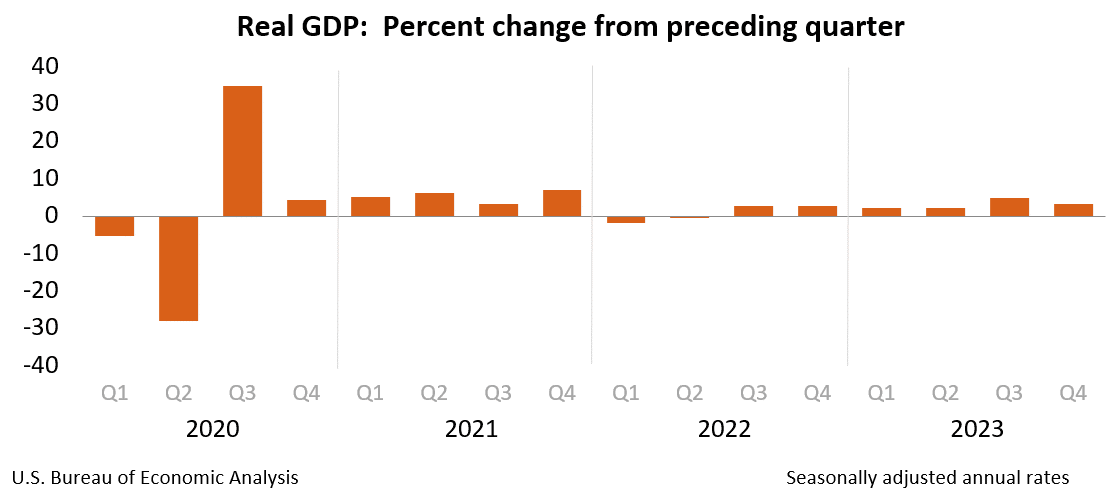The United States’ real gross domestic product (GDP) grew at an annual rate of 3.3% in 2023’s fourth quarter, according to the advance estimate released Jan. 25 by the Bureau of Economic Analysis.
While the figure decelerated from 3Q23’s robust 4.9% growth, it easily topped forecasters consensus expectations and suggested continued resilience in a period of historically high interest rates and lasting inflation.
It was the sixth straight quarter with annual GDP growth of at least 2%. For all of 2023, U.S. GDP grew 2.5%, up from 2022’s 1.9%.
The new figure is based on source data that are incomplete or subject to further revision by the Bureau, which will release its second 4Q23 estimate on Feb. 28.

The Bureau noted that 4Q’s GDP acceleration reflected increases in consumer spending, exports, state and local government spending, nonresidential fixed investment, federal government spending, private inventory investment and residential fixed investment. Imports, which are a subtraction in the GDP’s calculation, also increased.
From the Bureau:
“The increase in consumer spending reflected increases in both services and goods. Within services, the leading contributors were food services and accommodations as well as health care. Within goods, the leading contributors to the increase were other nondurable goods (led by pharmaceutical products) and recreational goods and vehicles (led by computer software). Within exports, both goods (led by petroleum) and services (led by financial services) increased.
The increase in state and local government spending primarily reflected increases in compensation of state and local government employees and investment in structures. The increase in nonresidential fixed investment reflected increases in intellectual property products, structures, and equipment.
Within federal government spending, the increase was led by nondefense spending. The increase in inventory investment was led by wholesale trade industries. Within residential fixed investment, the increase reflected an increase in new residential structures that was partly offset by a decrease in brokers’ commissions.
Within imports, the increase primarily reflected an increase in services (led by travel).”
Related Posts
-
It dwarfs the 2.1% growth seen in 2023's second quarter.
-
GDP growth was revised up from the 4.9% issued on Oct. 26.
-
July's PPI increased at a faster pace in July vs. June, with core CPI posting…





